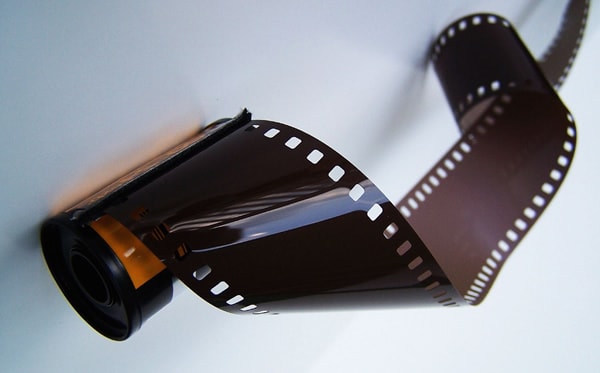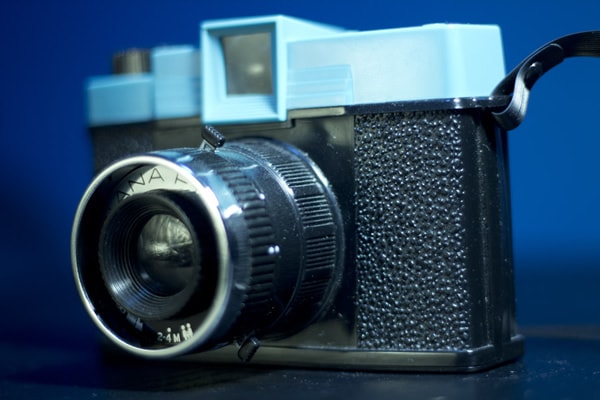Is There Still A Place For Analog Cameras in Modern Photography?
There are about ten major companies that still continue to produce photographic film. Twelve other companies have already been discontinued, while another two went bankrupt.
Modern analog product lines are mostly recreations of older models that can date back to several decades ago; there are some new, never-before-seen cameras being produced that use film.
Any decent SLR camera can definitely be used to take very sharp and clear imagery, but compared to the versatility and convenience digital cameras offer, they seem gimmicky, especially when you take into consideration also having to haul around extra lenses, film, tripods, flash, and batteries too.

image by flattop341
Take lomography, for instance, a movement founded in 1992, and which manifested into a company three years later. The light leakages, consistent over-saturation, and accidental vignetting (darkened corners at the edges of their pictures) of the Diana cameras, which would cost less than a dollar back when they first were made in the 1960s, are now being reproduced as lomography cameras, which come complete with all their original, likeable flaws, but also with vast improvements as well.
I can definitely say that their Diana F+ camera is, at a retail price of around $70, along with its hundreds of dollars of worthy accessories, is worth dropping the money on. But don’t count on any of the Diana products or other lomographic cameras for matching technical superiority, clarity, or freedom of control of film SLR cameras.
The Diana F+ can take some memorable and unique looking pictures, but, with three other cameras that easily beat the Diana in terms of sharpness and versatility, along with no desire to make professional photography any more of a burden than it already is, the Diana’s the last camera I make room for in my bag.

photo by Ray Carey
I also own an Olympus XA1, a 35mm rangefinder camera (Rangefinder cameras, most of which use film, have a focusing mechanism that allows you to measure the distance from your subject by showing two pictures at once, which come together as you adjust its wheel to the marked distances), a Canon Rebel T3, one of the cheapest, and, for the money, best DSLRs available on the market, and a Yashica FX-3 Super, a 35mm SLR camera you could probably find in any nearby camera shop.
The Diana uses 120mm film, but using its Instant Back accessory, which costs and sizes just as much as the camera itself, you can shoot mini Instax polaroid film. Polaroid is what the majority of the new film cameras being released use. Polaroid film grants instant satisfaction better than any other type of camera. Being able to hold and touch a picture with your fingers adds that much more emotion and realism. Polaroid shots make great spur-of-the-moment gifts, and with the association of a fond memory or feeling, will become instant mementoes.
Though Polaroid’s much quicker and easier than the process of scanning, uploading, and then printing digital photos, you’re forced to be much more considerate when taking pictures, because for most moving shots, you only get one chance to take it. Polaroid cameras are great for parties, street photography, or any situations that involve spontaneity and moving, active subjects.
The Instax Polaroid shot taken below from the Diana F+ has a unique look and quality that’s completely different from a clearer and sharper digital reproduction of a similar subject. The classic, trademark vignetting adds a nice sense of framing for photographed objects.

And in terms of style and looks, the Diana’s retro blue-and-black body, shown below, gets lots of positive reactions, making it way very people-friendly. It’s not just the Diana; all the other analog cameras, with their old-fashioned, compact bodies elicit ‘oohs’ and affable warm vibes while my bulky and clunky DSLR can receive some awkward, sometimes paranoid-looking stares.
For candid photography, and especially in spontaneous portraits, I’d rather use an old polaroid over even the most high-end, fanciest digital cameras.
Any other film that’s not polaroid will have more complicated developing processes.
For 35mm film, which for many hobbyists will be the only film you’d ever need to use, many scanners are compatible with and will be able to scan the negatives. You’d need to make the negatives light-safe first though, which you can do yourself for black-and-white film strips in a twelve-step, thirty-minute process, but most cities will have a shop or business that’ll do all the processing and printing for you. And, to develop film yourself, you need access to a place where you can work in total darkness. There’s probably a few darkrooms lurking around somewhere in your city, especially if you’re near a college campus, but it’s fairly easy to make a room lightsafe, if you’re really keen on developing the photos yourself.
Editing in the darkroom is an even more arduous process than general post-production Photoshop. It’s much more expensive too after a while; a page of the photographic paper costs roughly a dollar, and even just making test strips can quickly drain your supply. Really, analog post-production is only viable in black-and-white film.The process of color film development is over thirty-two steps, and even analog purists / prudes will tell you to just send color rolls over to a camera shop or lab, who’ll usually have an automatic film processor and will charge you fairly nominal fees.
You’ll notice even the art of picture-taking in an analog medium, compared to digital photography, is even more different than printing. Film SLR cameras are no match to even entry-level, compact digital cameras for picture quality and sharpness.
I remember seeing a post on an image critiquing section of a photography forum some months ago, and it was a very nicely scanned and edited print of a 35mm shot. The photo was such a fine and sharp shot that the picture looks like it could’ve been taken from a DSLR camera. But, something seemed off, and it was film’s unique aesthetic quality, which became traits that would be, and were indeed characterized and labeled by the other posters, as flaws in contemporary photography.
Some users concluded that the photograph was poorly edited in post-production, or the scene was poorly lit, or that it was just taken with a really cheap camera. When it was revealed that it was actually an 35mm shot, the criticisms turned to a consensus that trying to mimic a DSLR-esque quality with a camera almost several decades old just defeats the purpose of film. It would just be a bit harder to agree on what that purpose was.
Well, let’s look at the hundred million people using Instagram, before it tried to get all weird with its terms and copyrights. Instagram’s designed to make those old-school retro, vintage looks achievable with the push of a virtual button, though most of the time, you’d get laughed at if you tried putting something you took on an iPhone in a portfolio or resume. Instagram photos can look pretty decent, but you can’t escape the fact that it’s still only a glorified cell phone shot.
The Instagram audience also overlaps pretty widely with the hundreds among thousands of vintage / retro blogs on Tumblr, and their millions of followers. Just search Google Images for film, retro or vintage photos and you’ll see that there is a really huge audience for nostalgia.
People are naturally nostalgic, and usually only just about the past. There’s so many minor and specific things that these photos, captured with my Yashica FX-3, that digital photographs with all their sharpness and luster can’t reach. Film photos just look cool, and without you having to mess around with it in Photoshop.


Even without a tripod or any other sort of steadying mechanisms, the Yashica FX-3 still takes some pretty sharp pictures. Neither of the photos above were edited, and they were taken with Kodak Tri-X film, ISO 400. These are direct scans from negatives made at the nearest campus library. Most SLR cameras can take pictures with a sharpness comparable even to their digital counterparts, though no digital camera on the market is fitted with equipment that can successfully mimic the aesthetic effects of film.
Analog photography really isn’t that much more of an inconvenience than digital photography, so long as you get your photos developed and processed at a store or a lab. The only disadvantage to getting your film rolls scanned and printed digitally as opposed to doing it yourself in a darkroom is that any post-production work has to be done in some editing program. I see this as a drawback and inconvenience because when you’re working on a film scan in Photoshop, it’s hard to determine the different distinctions in visual standards between film and digital photography.
It feels a bit wasteful to hold back on your usual post-editing efforts, but after a very undefined extent of work, the scanned photo can lose its retro appeal and, visually, will be compared with the clarity and focus of DSLR imagery. Just because it’s too much of a headache, I prefer to leave out any post-production editing for film photos that’s not in the darkroom.
Even without any editing in post-production, the quality that you achieve when you develop your own black-and-white film prints on glossy, light-sensitive paper definitely will beat anything that comes out of a photo printer. And the 35mm black-and-white process is definitely doable unlike color roll development, and the results of photo printing in its purest form is unmatched by even the finest digital post-production.
And while most professional college courses at general colleges require a DSLR camera and won’t accept film photos for assignments, analog is a much cheaper option, and way more viable to get hobbyist students started on a budding, paying career. Many of the higher-end analog cameras, or those without any major problems, at least, since nearly any used older camera you get from a camera shop will have at least a few imperfections, won’t cost even over a hundred dollars. Compare that to the several thousand dollar high-end digital cameras reach, and the difference is enormous.
All my film cameras and their accessories combined still cost less than my DSLR, and the Canon Rebel T3 retails at one of the lowest prices on the market. However, the cost of developing and printing the photos myself quickly build up on you, considering the prices of papers and scanning service fees. Getting your own rolls developed at a camera store is a much more expensive option than doing it yourself.
While it carries a far sharper learning curve and doesn’t grant digital photography’s instant satisfaction, analog is an experience that’s just as relevant and thriving. With a limited number of shots per film roll (24-36 shots for most brands) and no instant preview of your pictures, film photography takes a certain finesse and conscientiousness that will make you a better digital photographer as well.
Film pictures have a unique aesthetic that no digital camera is able to yet capture, and people in general react more warmly and intimately to analog equipment and photos than to a clumsy-looking DSLR. There’s no signs of analog dying out in photography’s future, and for some people’s preferences, it can be a more convenient and easier process than working with a digital camera. It’s definitely a good move to those wishing to see photography from a totally new perspective.
